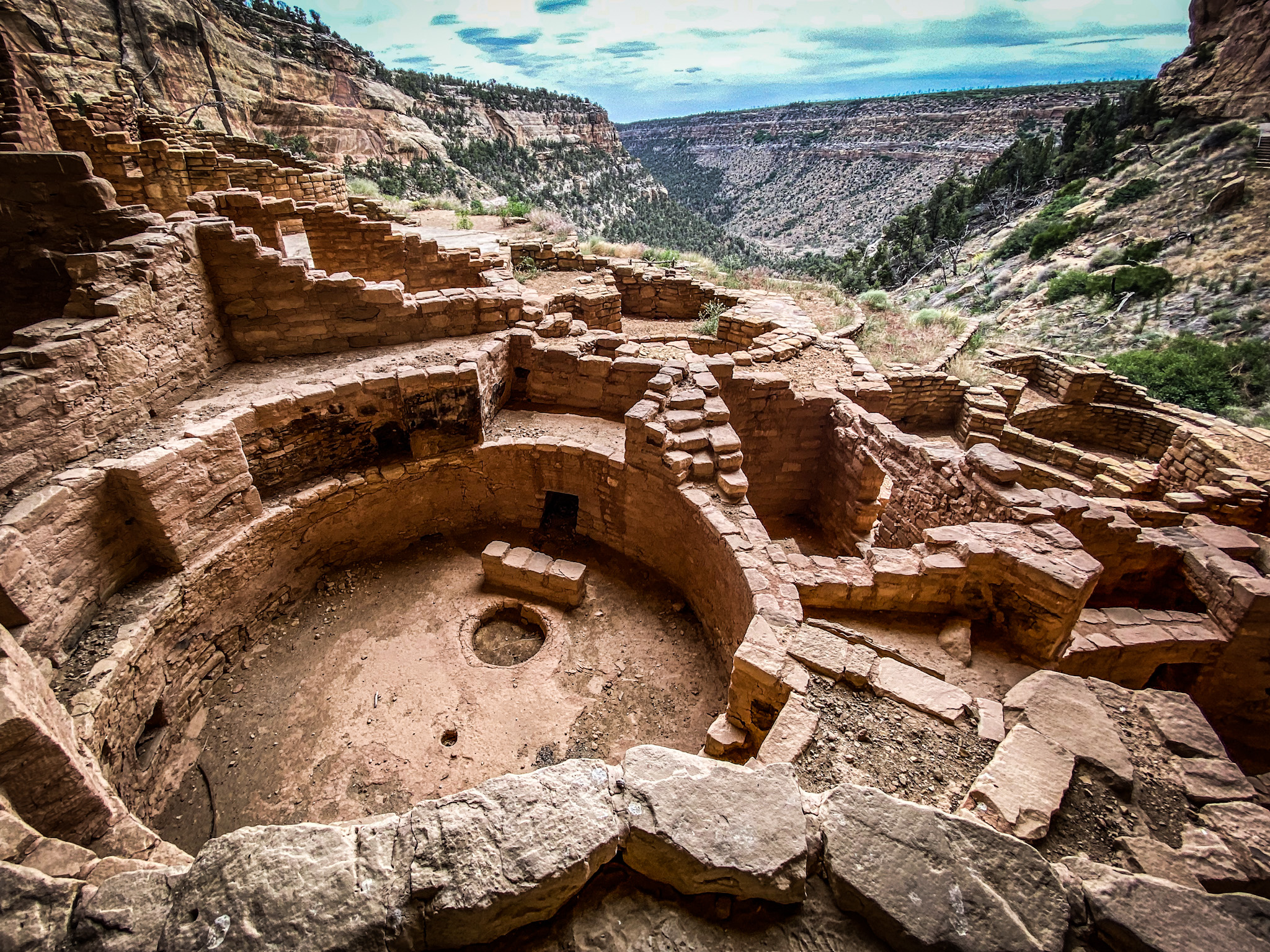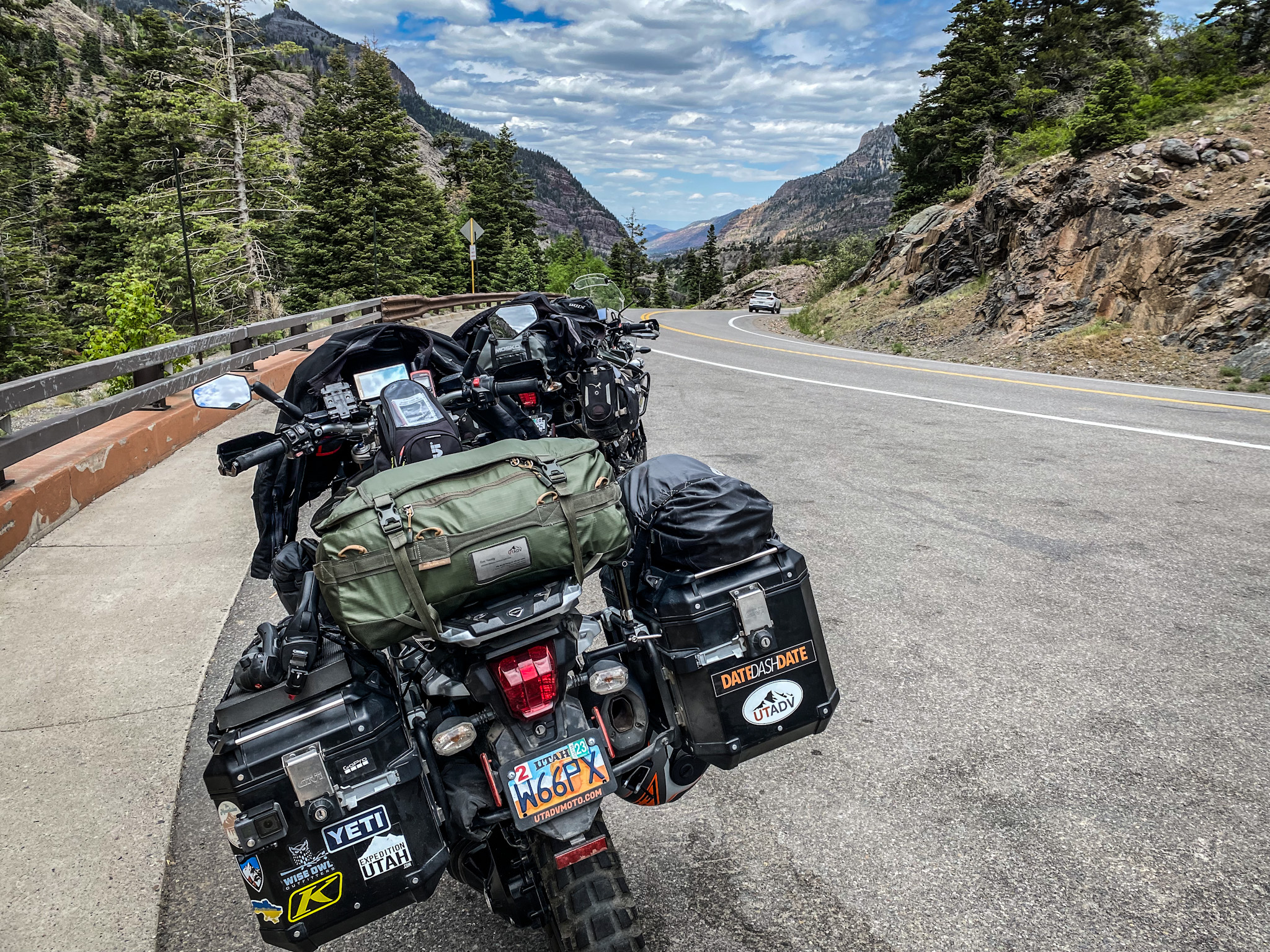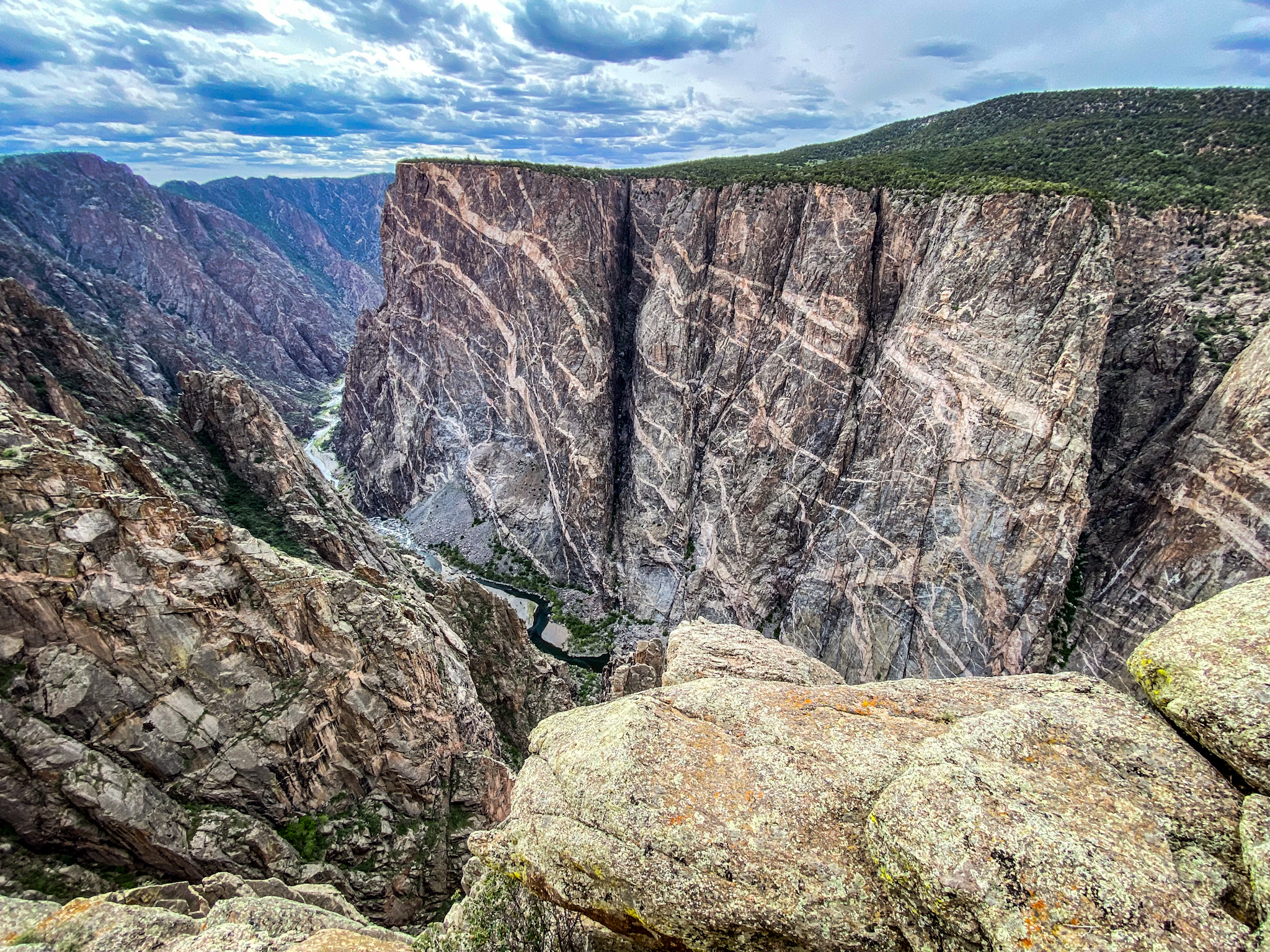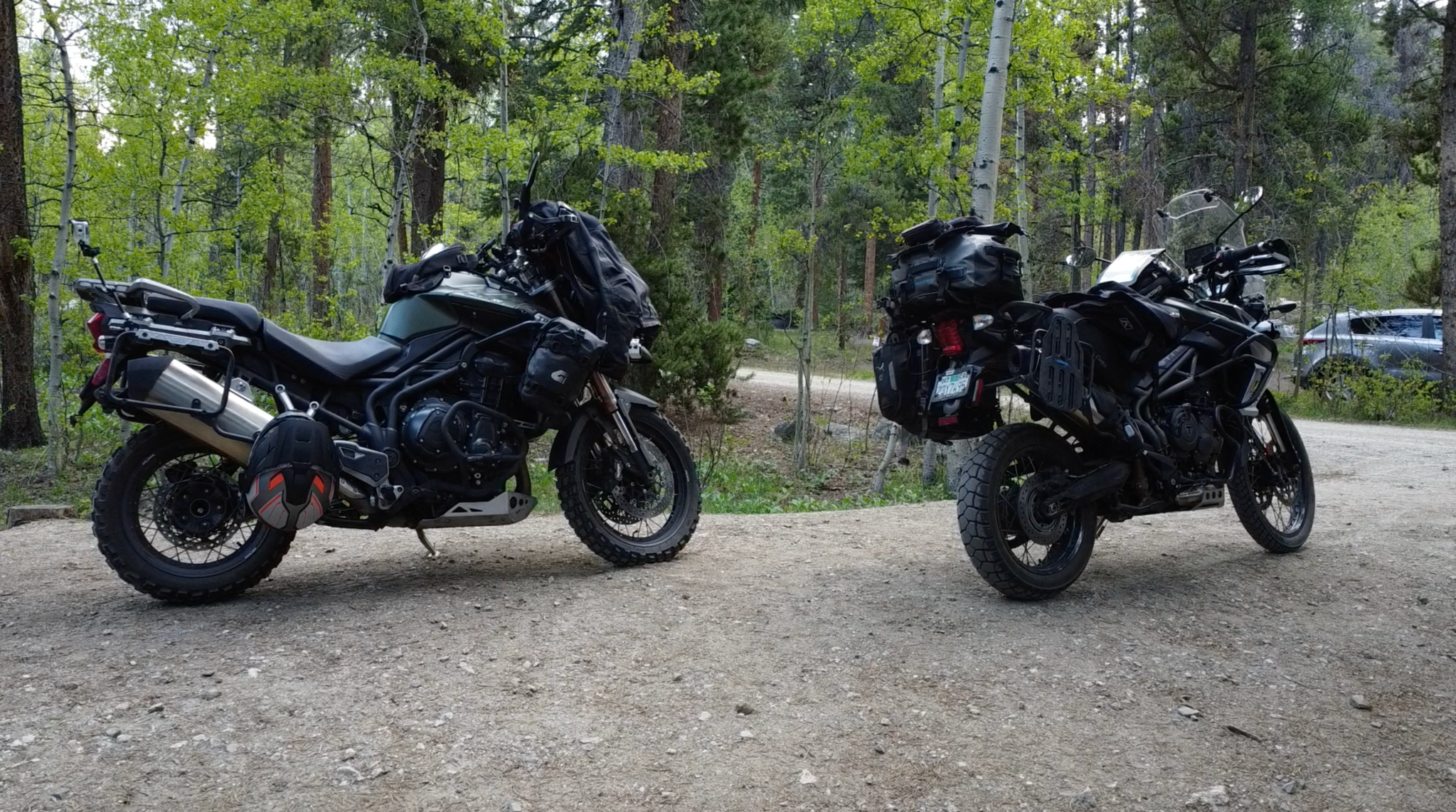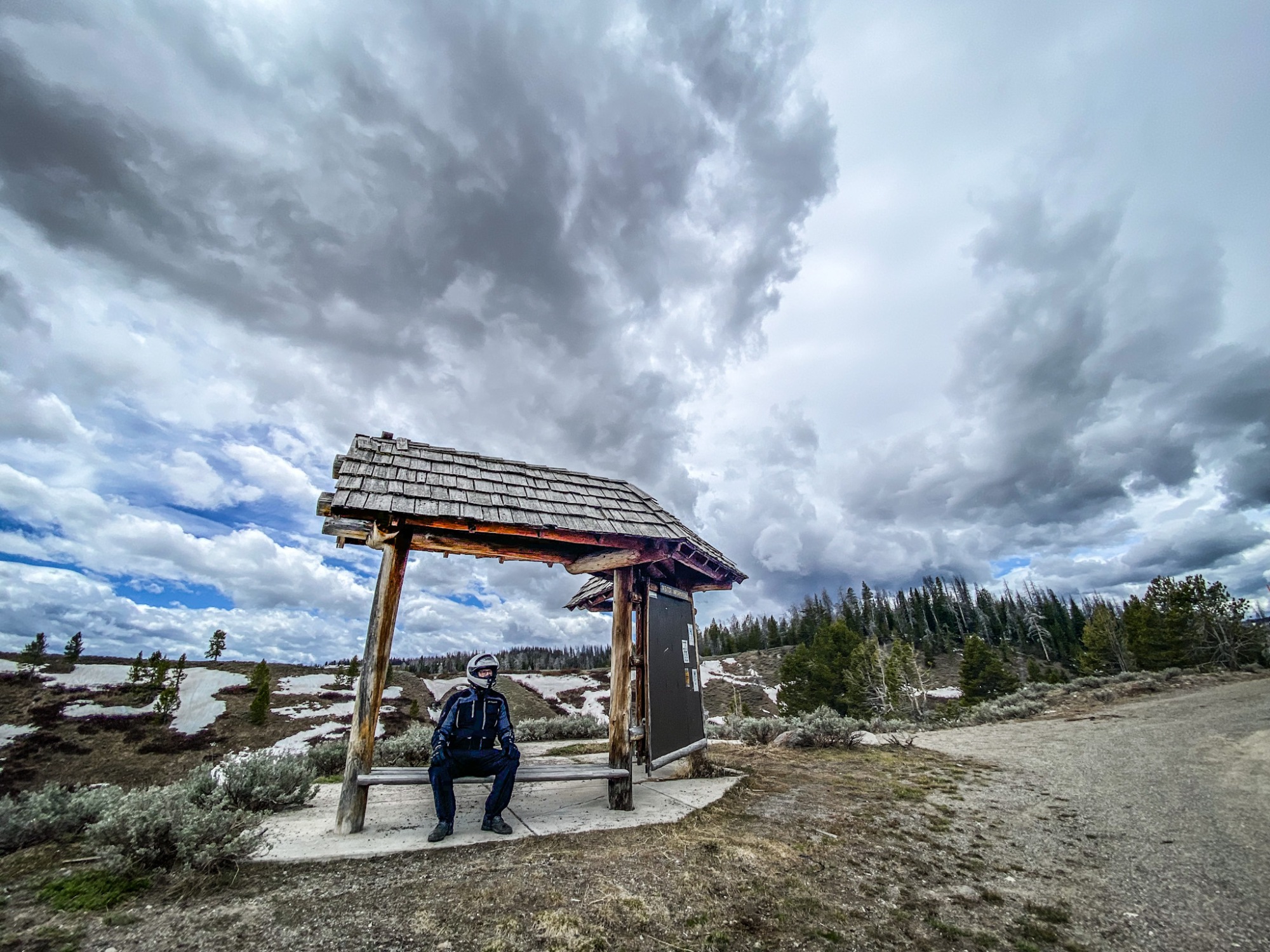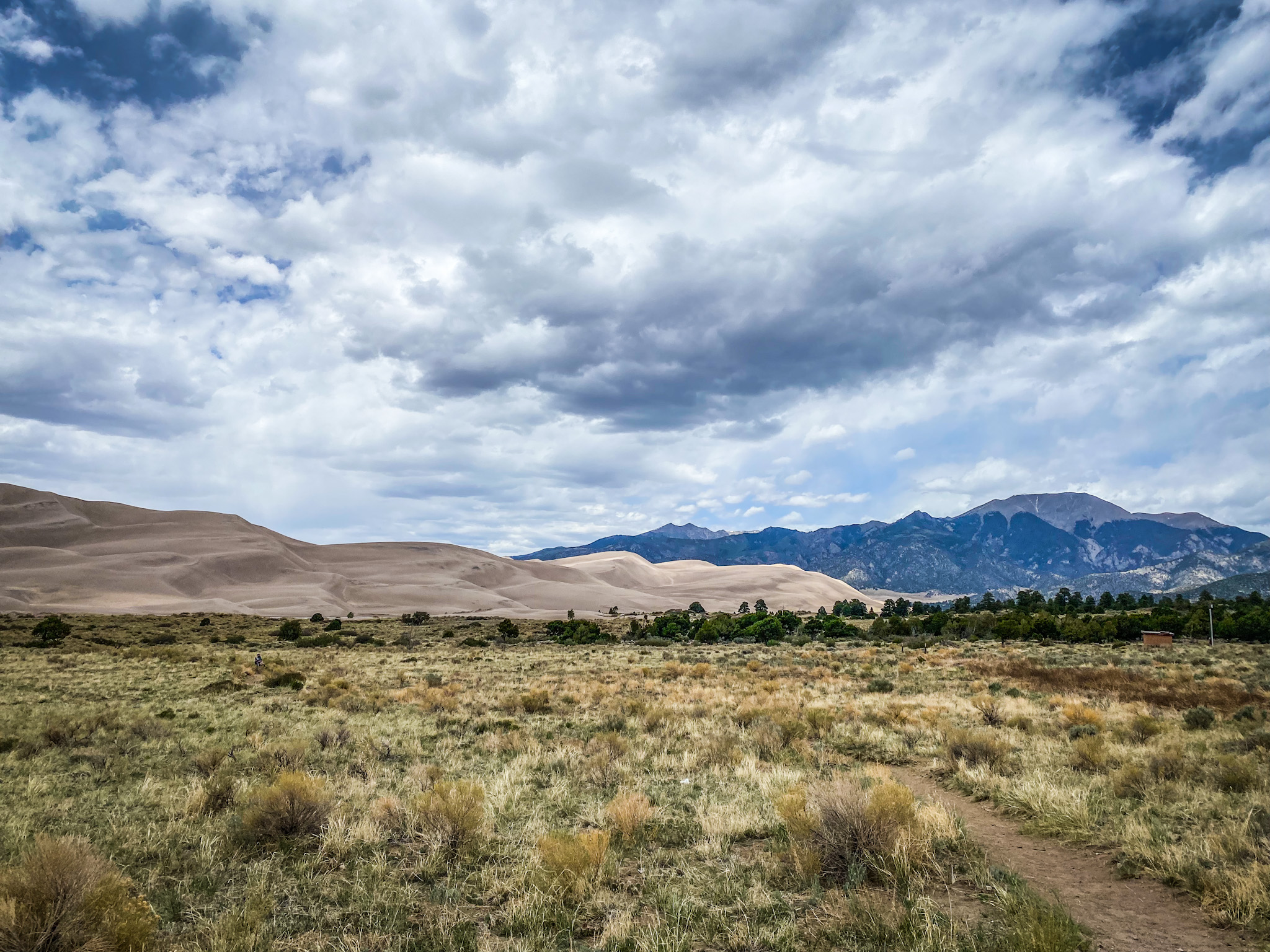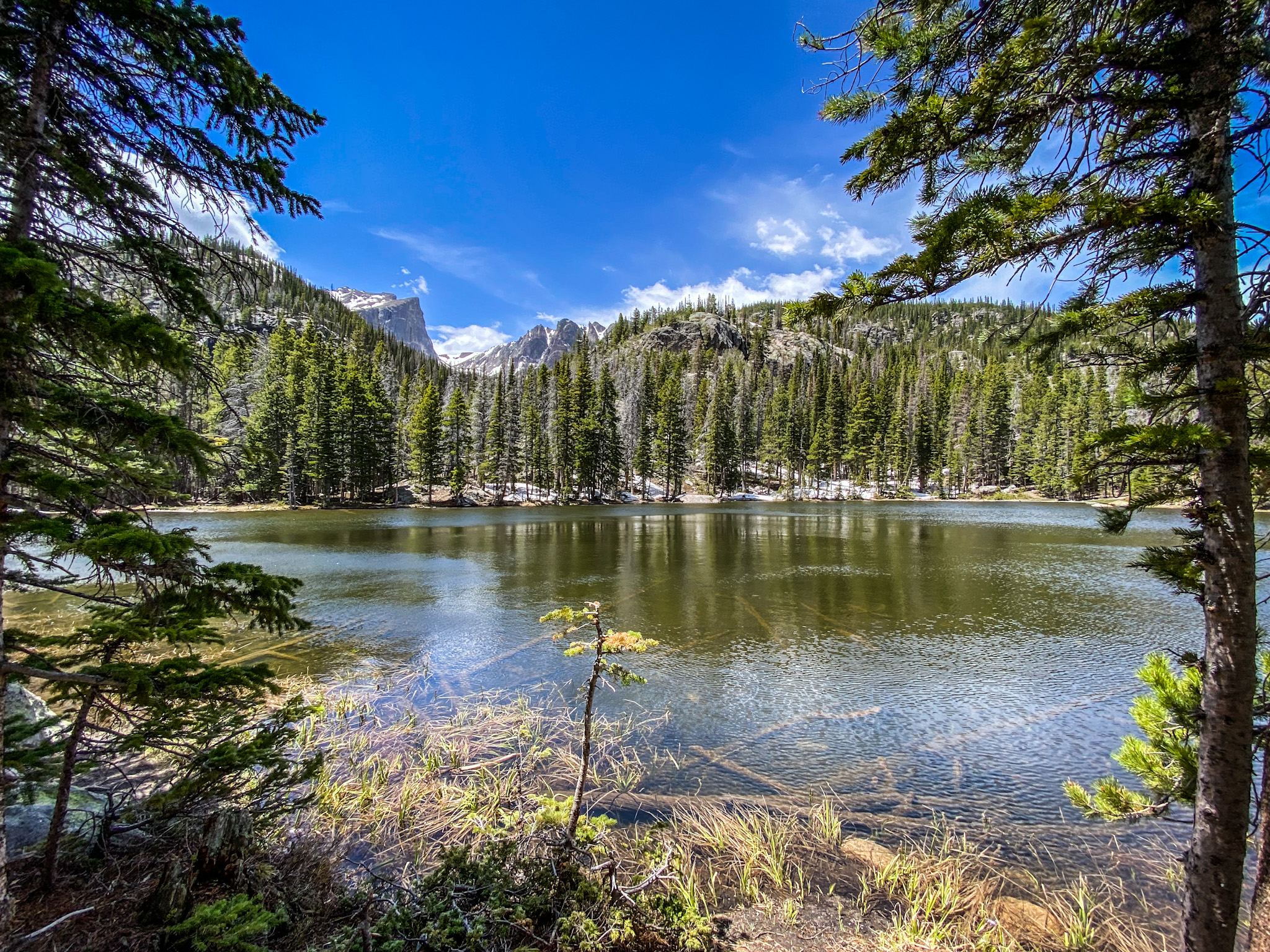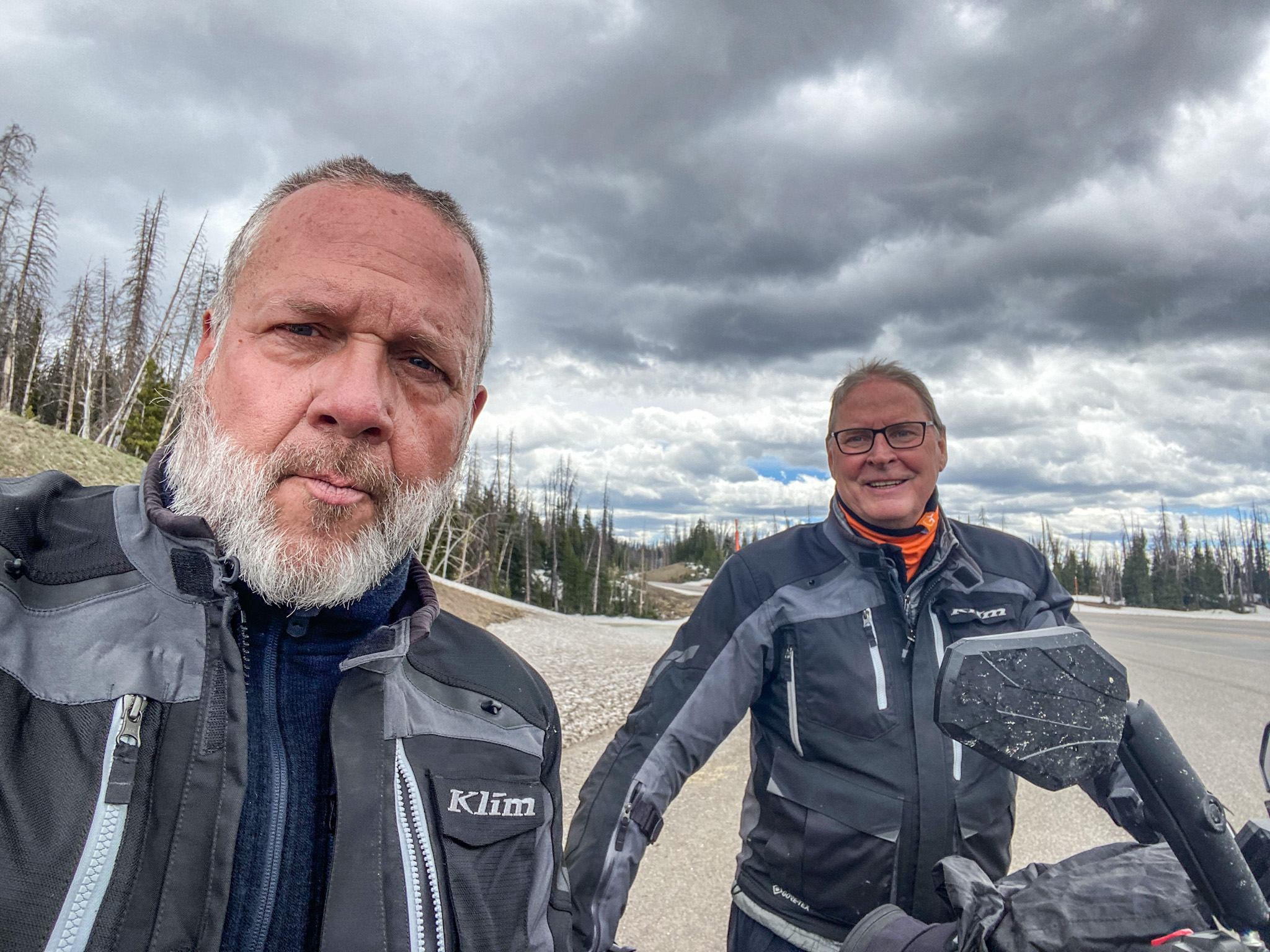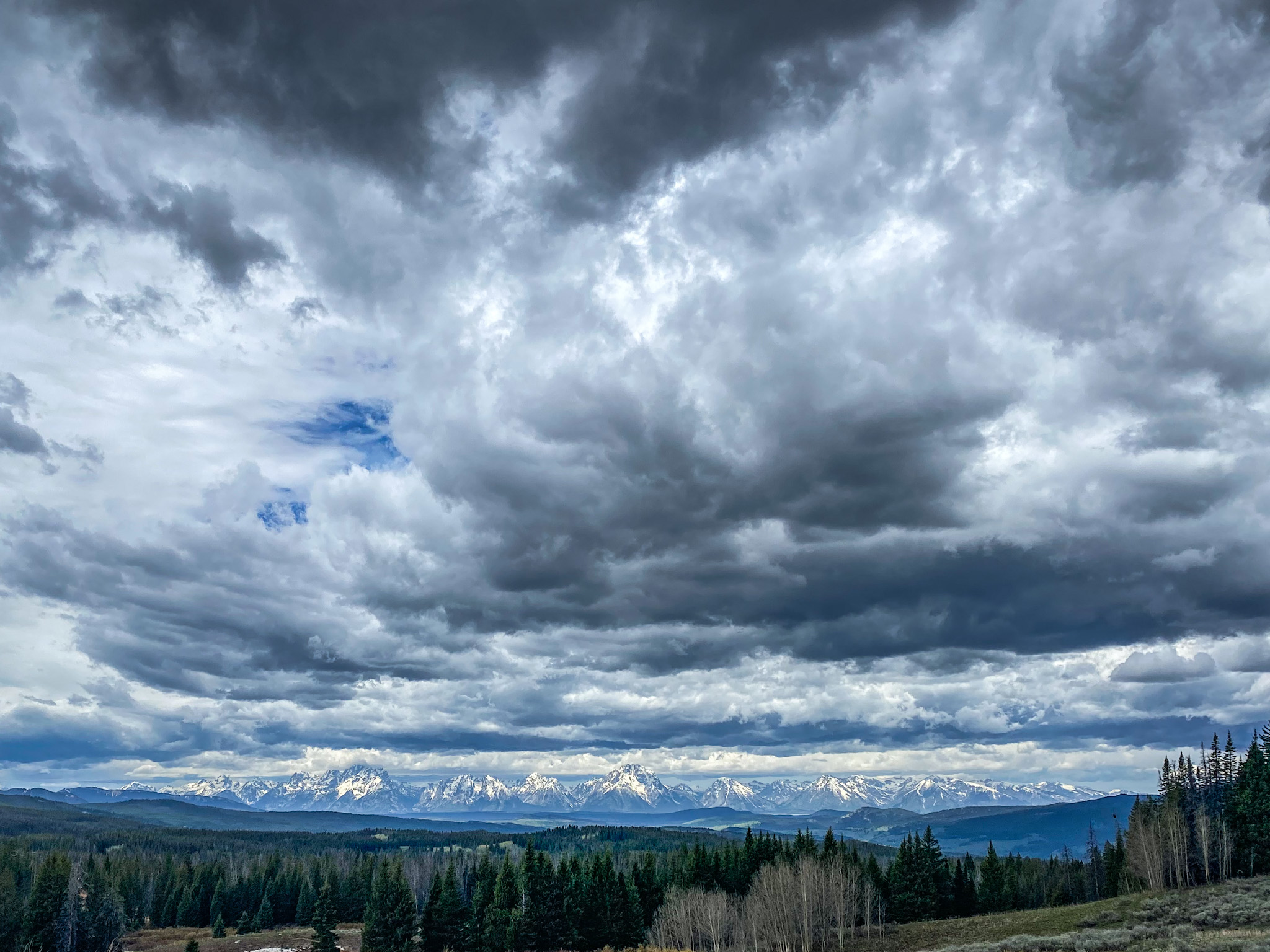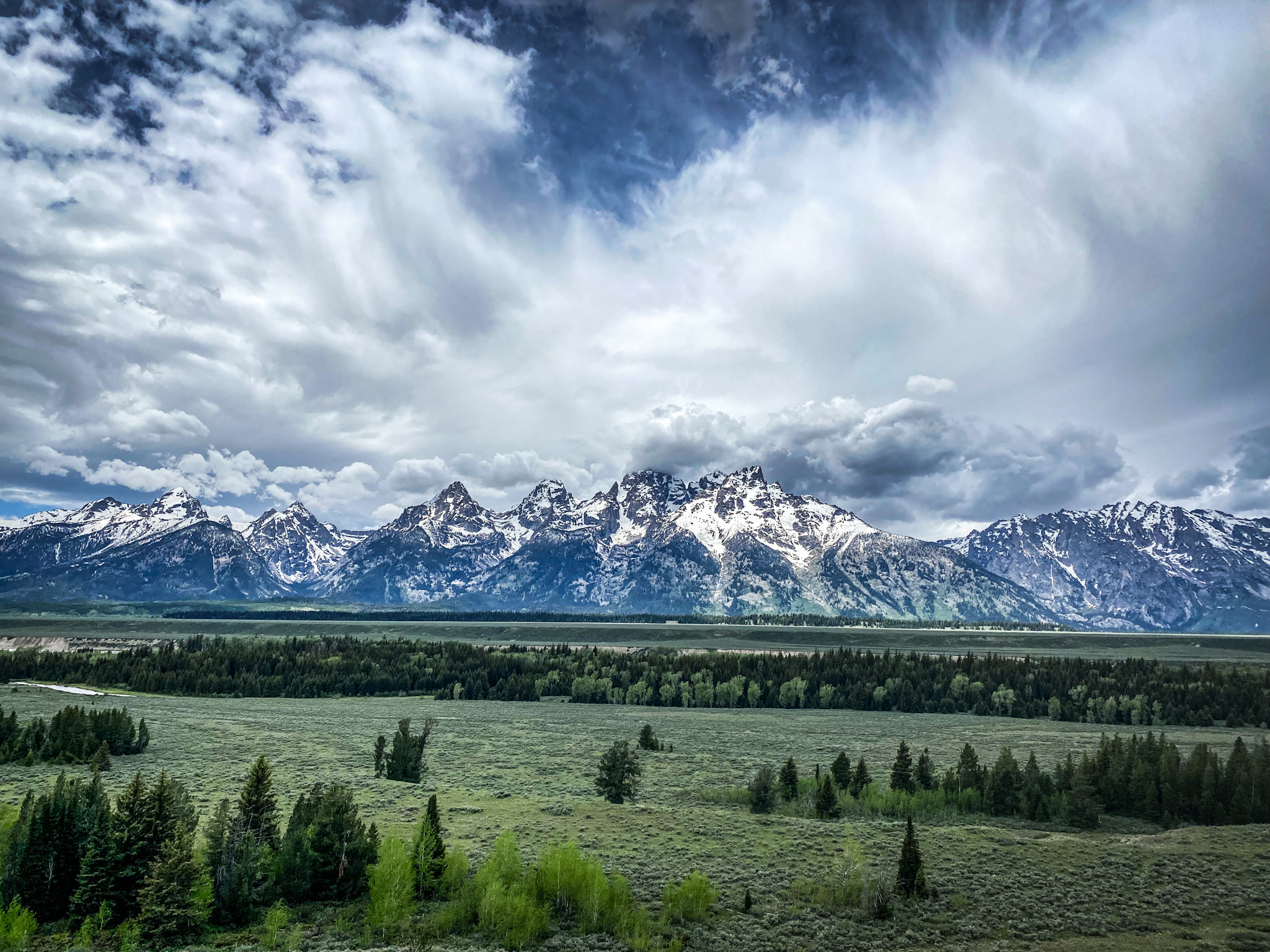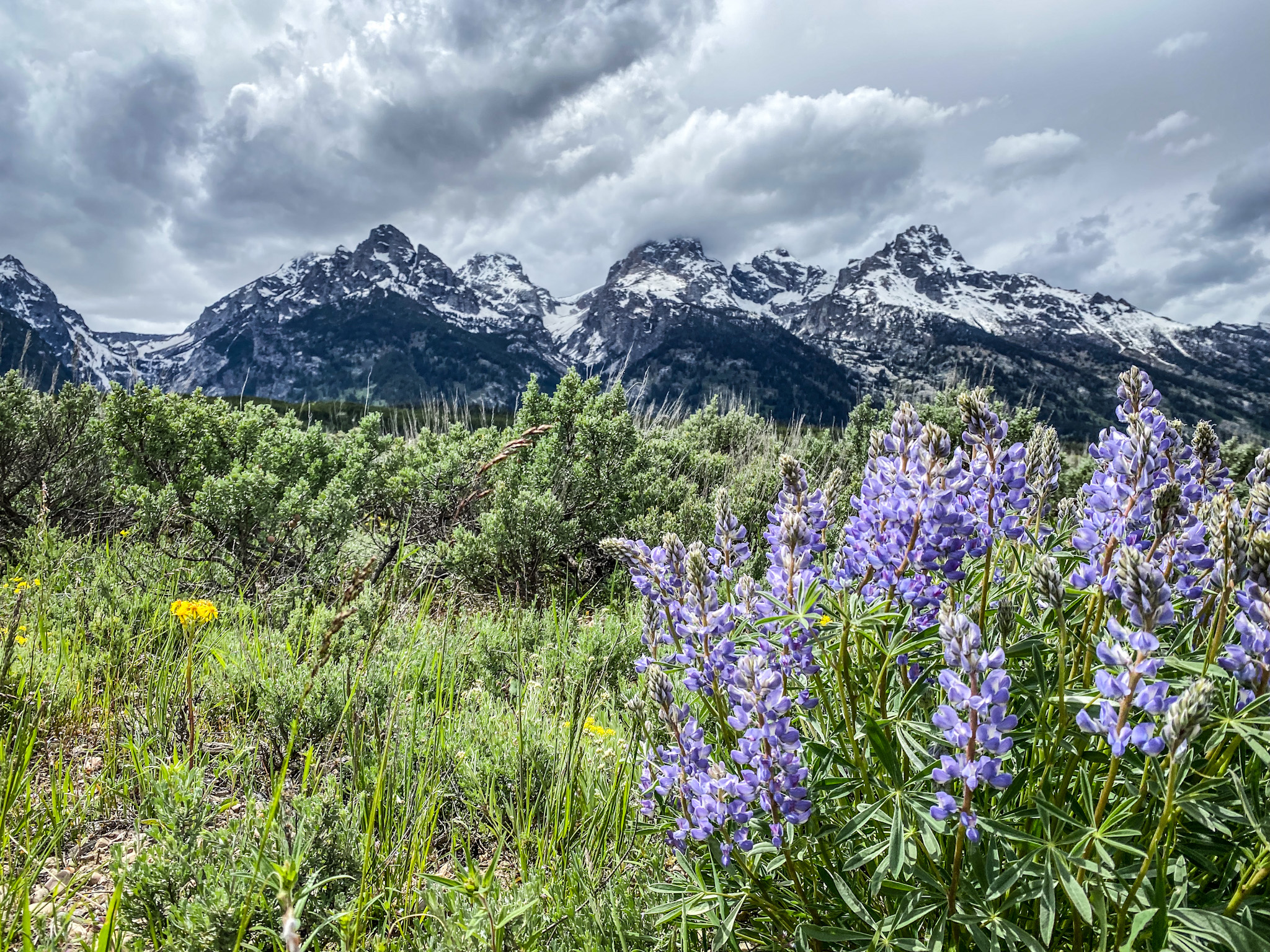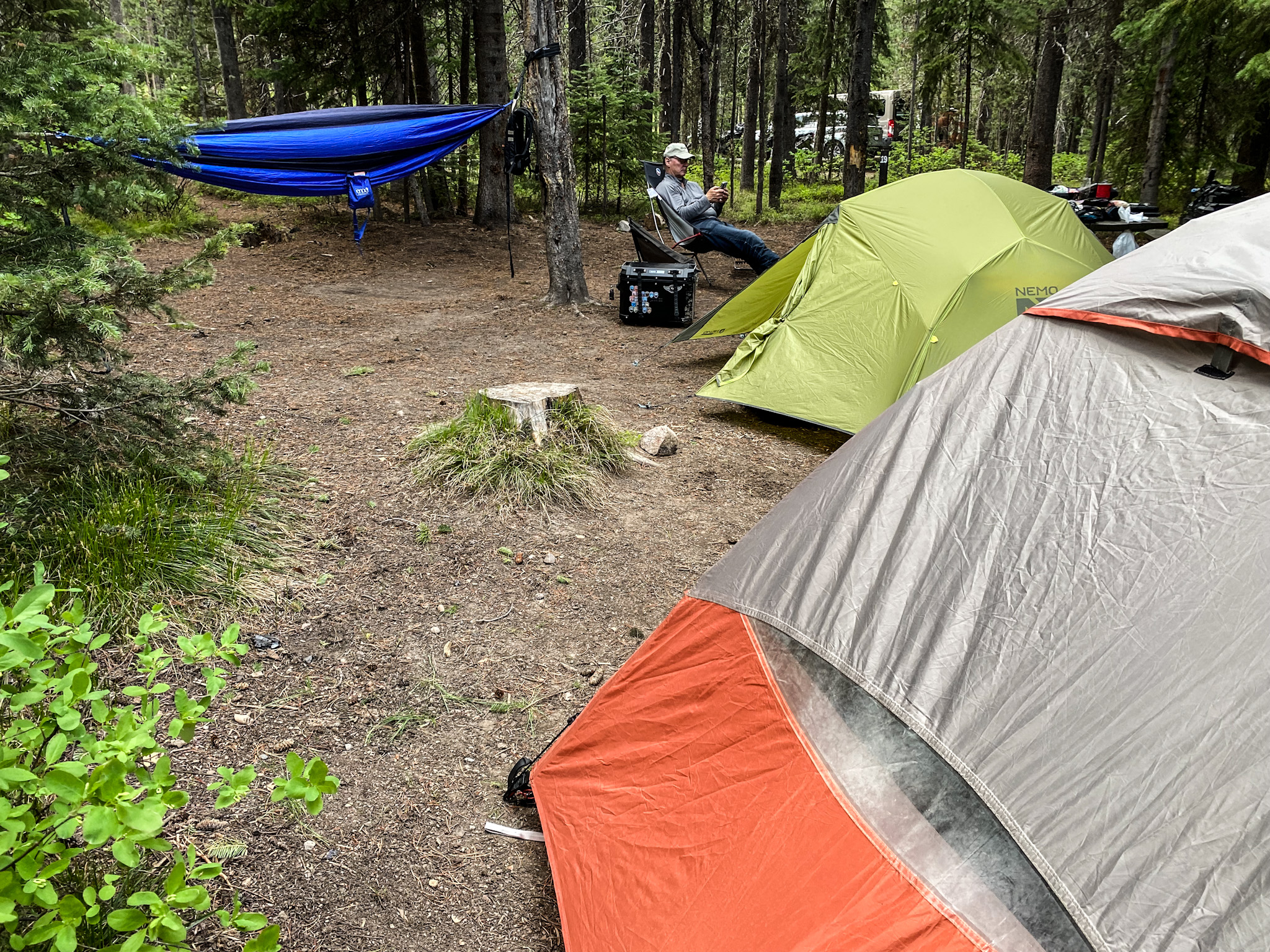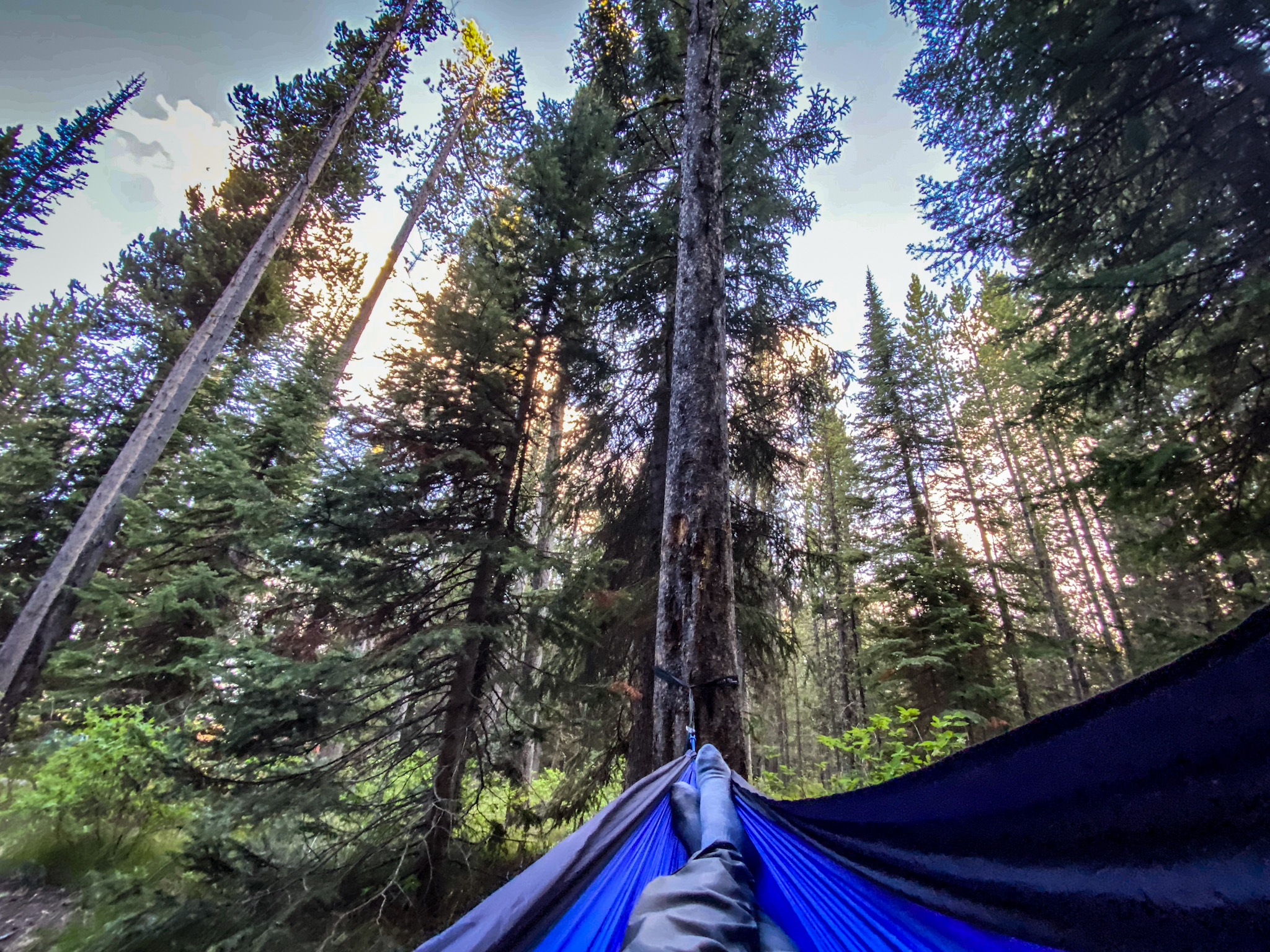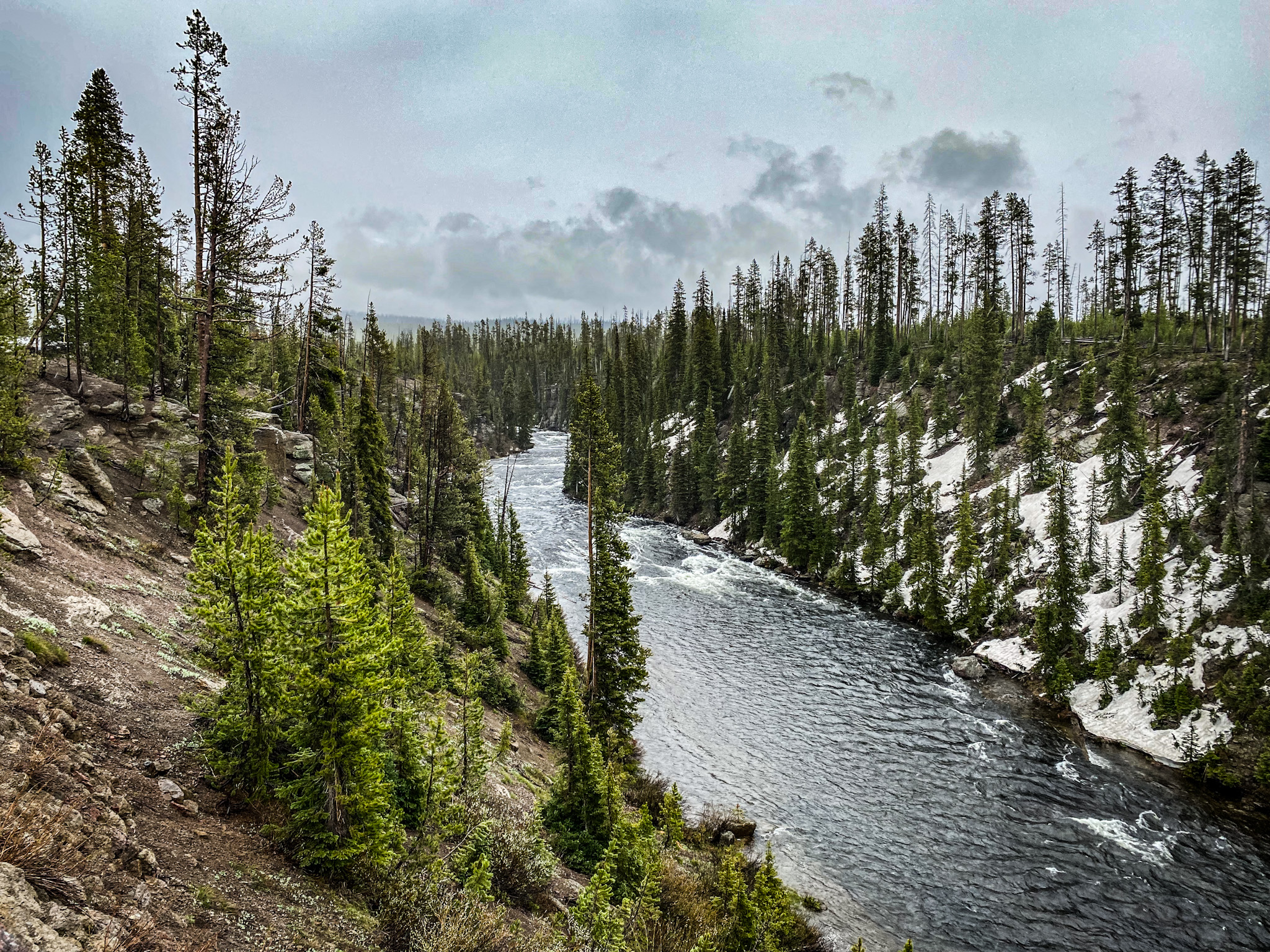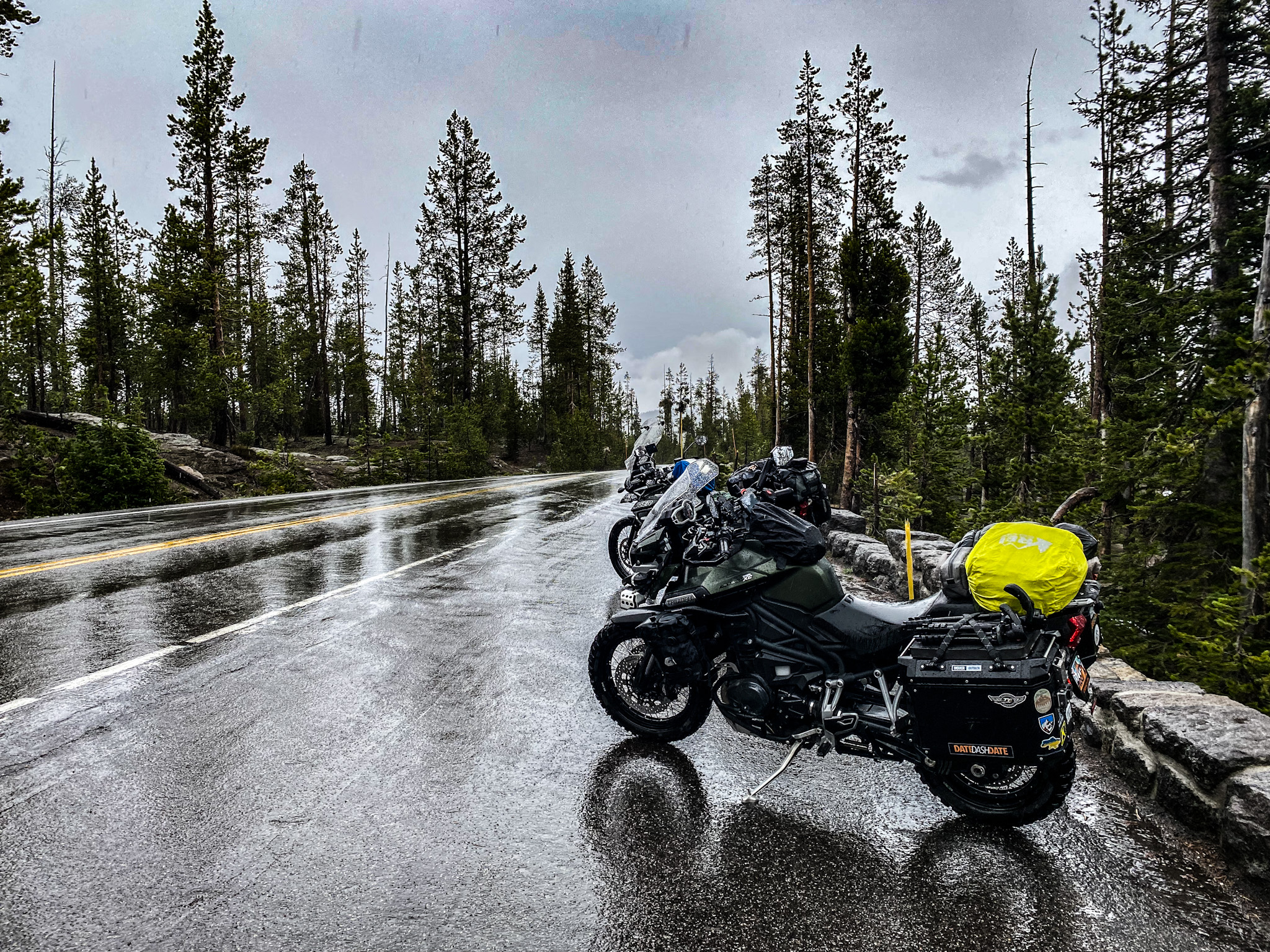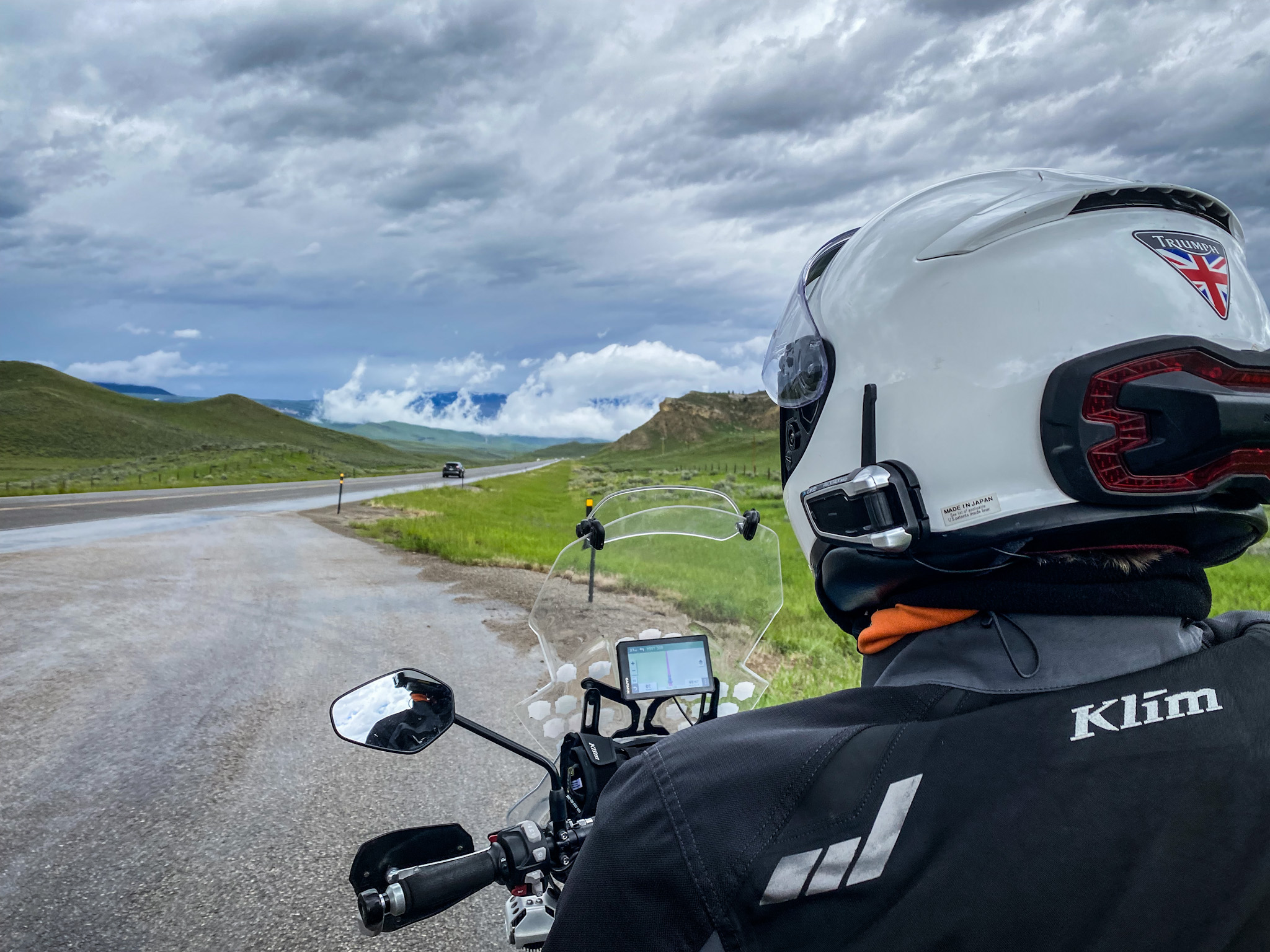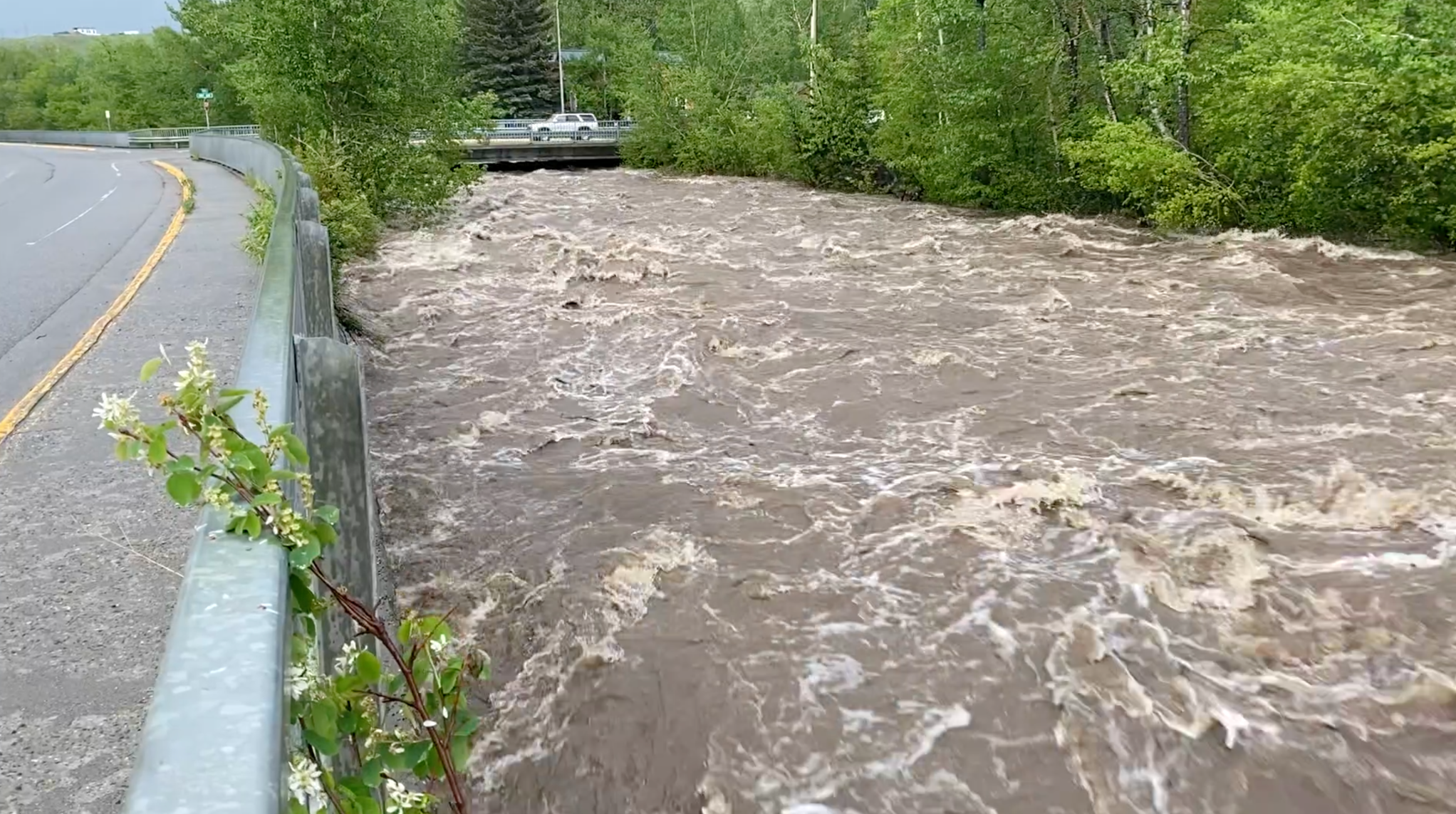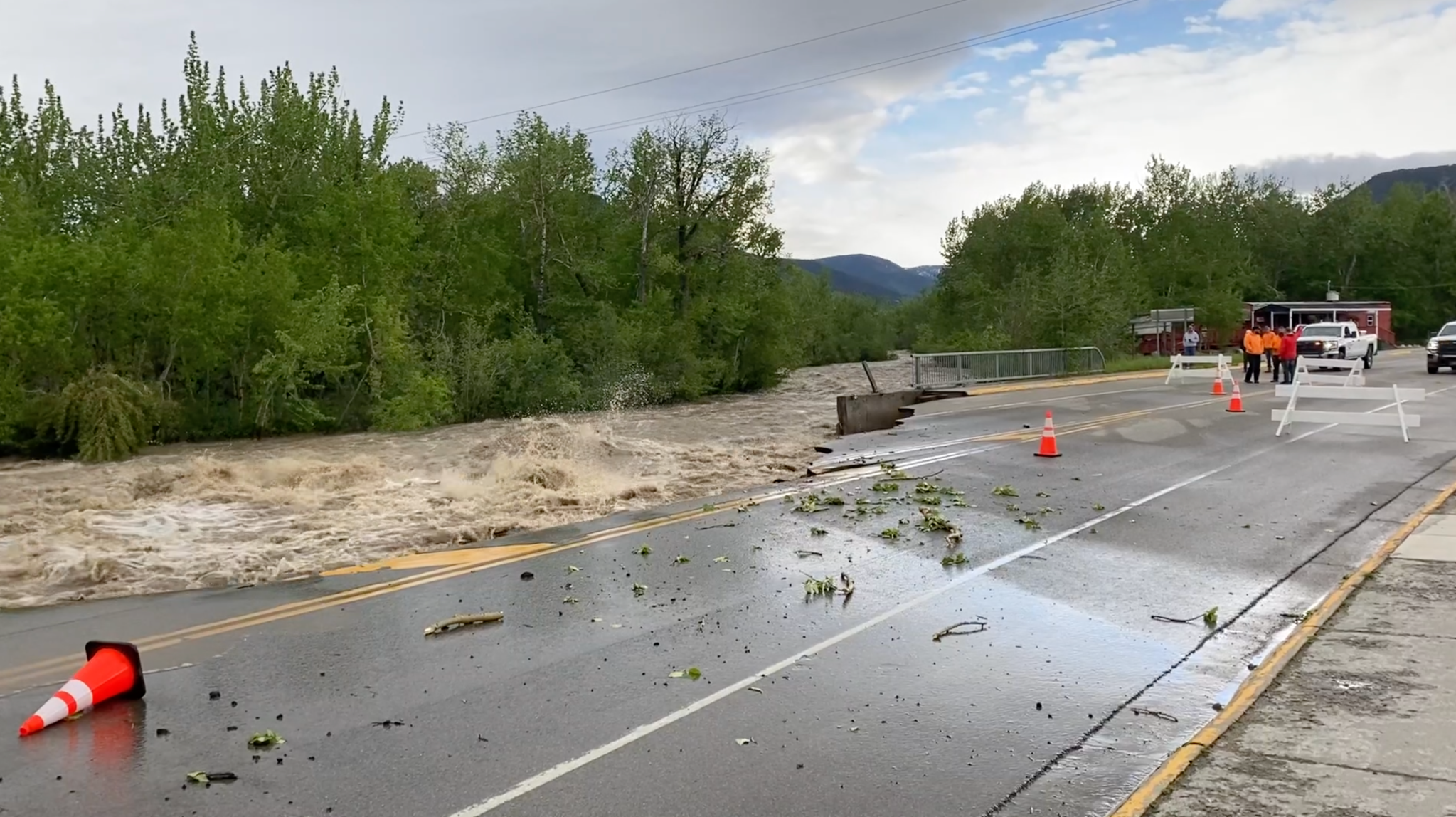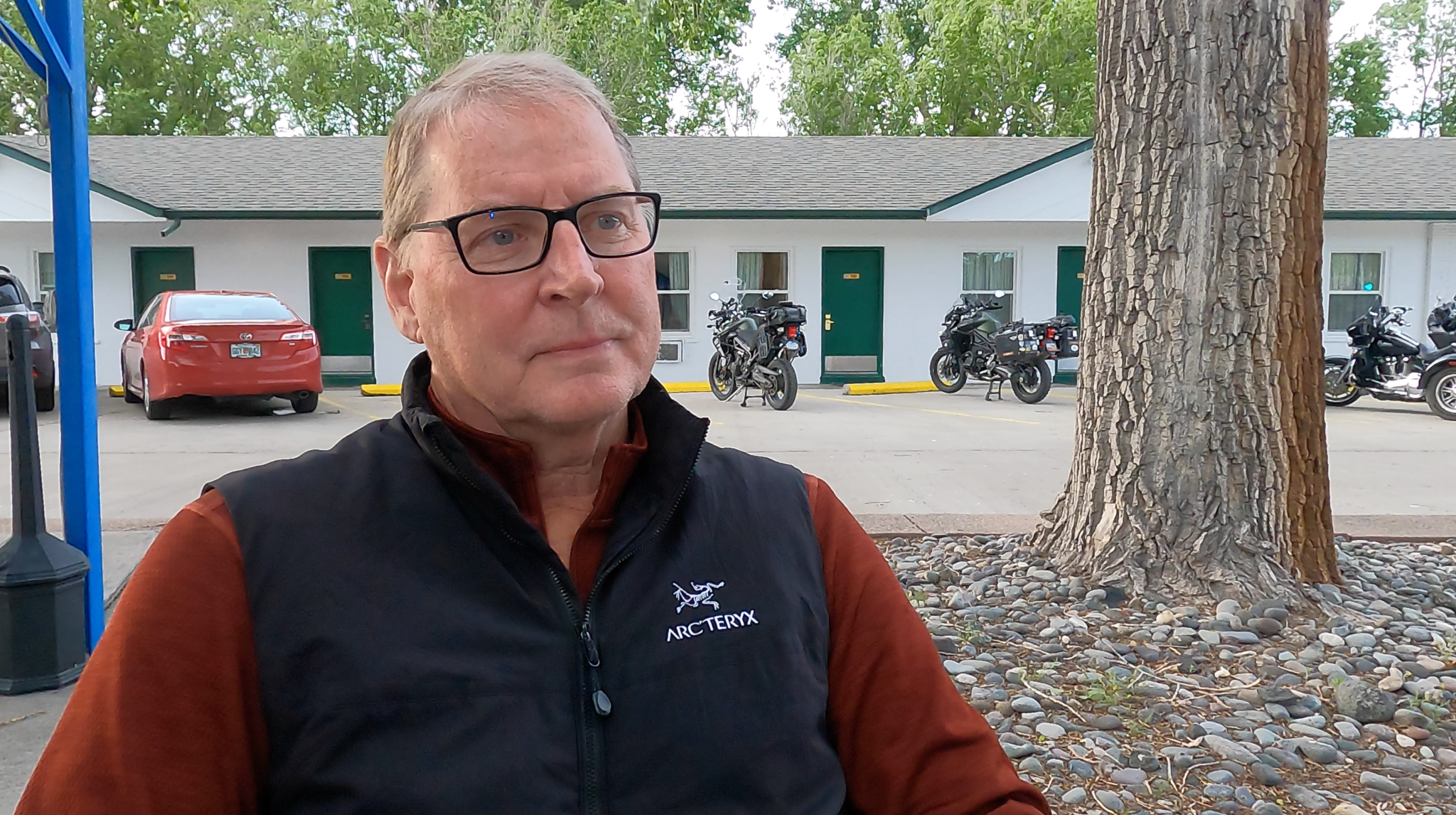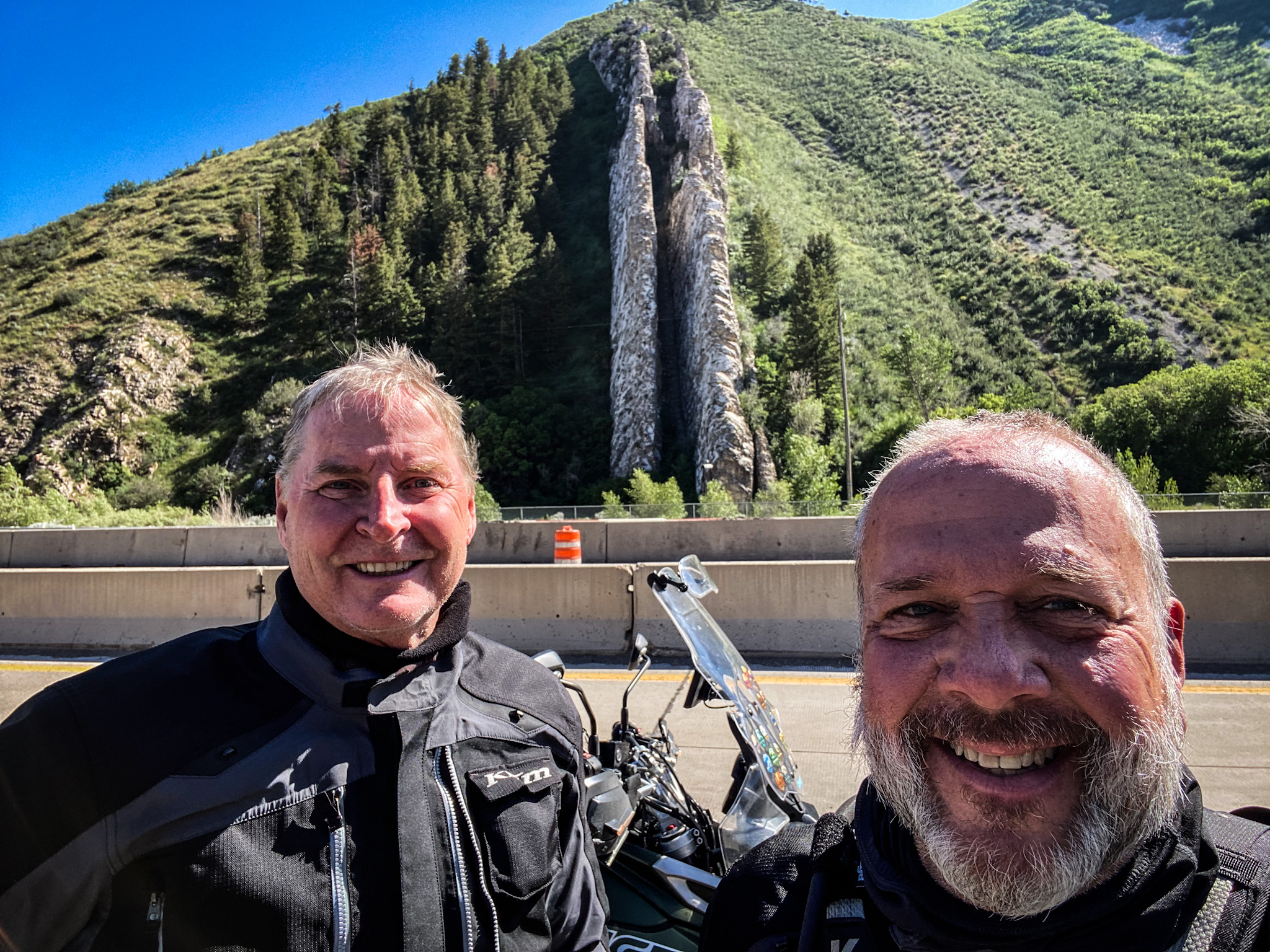Imnosaint
Gone Microcamping
From my book, Forget that I'm Dying. The ride was in June, 2022.
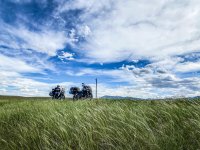
There were a number of ways I could’ve approached this ride, but the one I was most familiar with, the one I had practiced the majority of in my traveling life, was as a filmmaker.
The ride was a route through the most national parks one could visit in a loop along the Great Divide, including the North Rim of the Grand Canyon, Mesa Verde, the Black Canyon of the Gunnison, the Great Sand Dunes, Rocky Mountain, the Grand Teton and Yellowstone National Parks. Even though we were starting in the footprint of Utah’s Grand Circle, we skipped the Beehive State, having duly visited Zion, Bryce, Capitol Reef, Canyonlands and Arches National Parks on other trips, stickers adhered.
My walk-on friend and fellow Triumph enthusiast, Brian, was the trip planner and included another rider, Mark, who was supposed to join the adventure mid-tour, somewhere around Denver, but the coronavirus had different plans for him. Brian and I talked at length about the route, sharing maps and spreadsheets, laying out the way with as an efficient schedule as possible. In that process I kept indicating that I’m down for the ride as well, while Brian, having ridden with me through Utah was more than skeptical, he’d seen me travel firsthand, which, I guess, wasn’t very pretty and more daunting than I had recognized for myself. It wasn’t until I asked Brian about his riding jacket, when I realized I wasn’t included in the rider pool. “Why do you want to know?” He said. “Because I want to buy that one for this trip.” “Well, to be clear, what trip are we talking about here?” He asked. “The National Park trip.” I said. And that was awkward. He was thinking I wasn’t up to the arduous nature of riding the three thousand-plus miles in twenty days in June. And I was thinking, “Yeah, I could do that. If not, I could just go home.” This is where talking would’ve come in handy, on both our parts.
Once we got that figured out, I bought new gear, we planned more in earnest, and I invited my friend Ed Candland along. I’d been begging him to join me for another ride since we knocked out the Pacific Coast Highway a decade before. I called him up. “Ed, I’ve got a bucket list. I want to go on a ride and I want to go with you.” It should be noted that Ed is the busiest guy I know, a staple in Utah’s music education scene if not the entire planet traveling all over the globe, and at the time in the throes of building his bow-rehairing business, which through the years were barriers to our riding together, but Ed had just retired from teaching, and I played the cancer card. “I’ve been diagnosed with a rare, aggressive and terminal blood cancer and would really like to ride with you again.” I’ve learned all kinds of things about cancer since I’ve had it rubbed in my face, not the least of which is its persuasiveness. Ed joined the tour.
This is something done not without a good amount of forethought, planning and gearing up. Whether it be for a few days or a few weeks, the gear is the same, it’s just the amount of consumables that changes. While Brian and I were in for the full twenty-plus days, Ed was only able to join us for the first four which included camping at the North Rim of the Grand Canyon and then moving on to Mesa Verde. There are a number of types of gear required for such an adventure, the two at the top of the list are riding and camping gear, of which Ed had none save for his helmet and a jacket I gave him years ago when we did the Pacific Coast Highway ride and documentary, so Ed made a quick trip from his home in St. George to ours in Bountiful where we got him outfitted and packed.
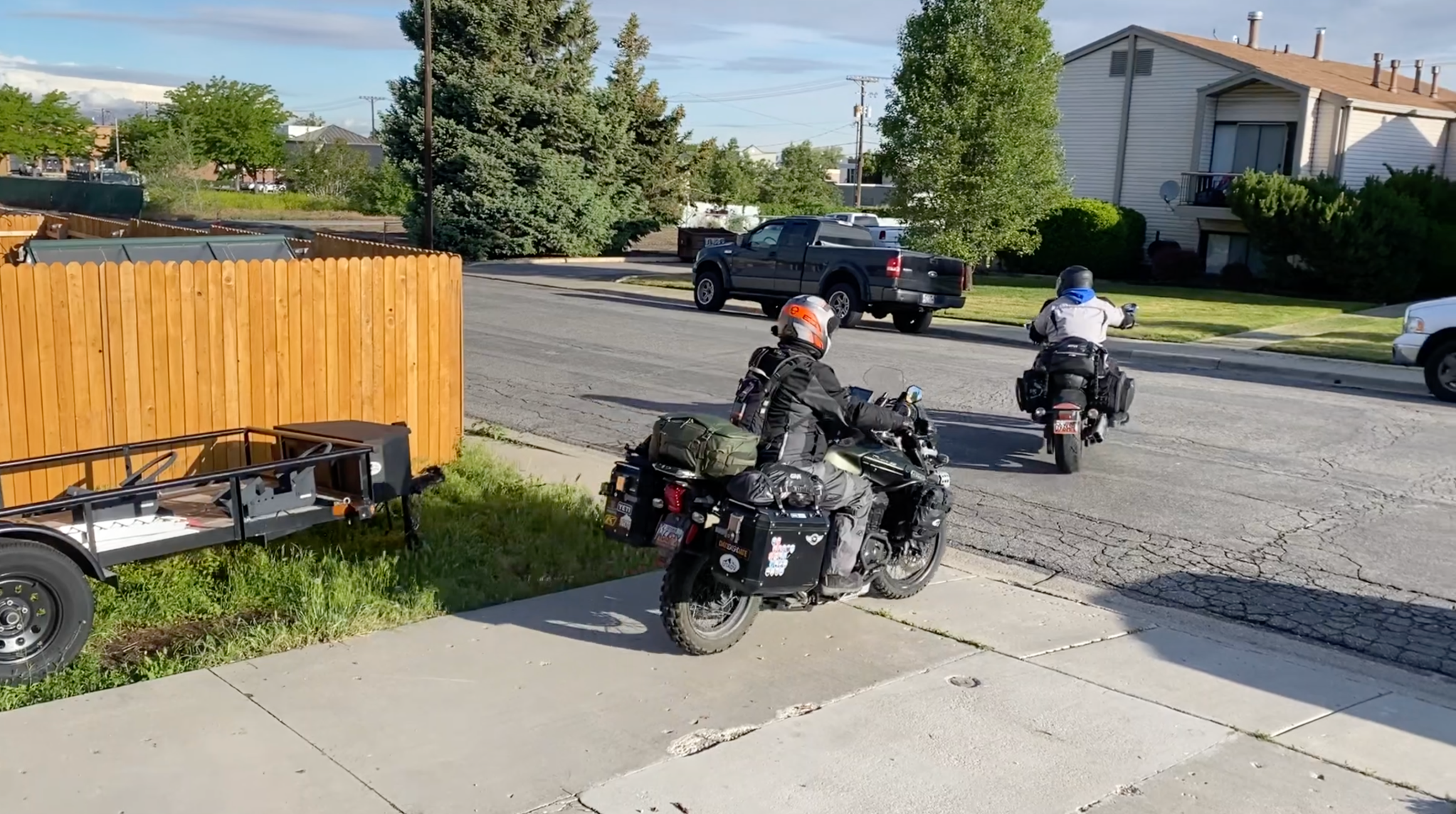
While Brian was making his way from the bay area of California to Southern Utah, Ed and I rode the I-15 corridor three hundred miles to Santa Clara, Utah, where we’d all meet up and officially begin what has become known as the Pearls on the Strand Tour. When I interviewed Brian for this trip’s documentary he talked about his premise of averting his midlife crisis by buying a motorcycle and justifying its acquisition by riding to “Use the national parks as pearls on the strand… and that will pull me forward…” And thus the documentary was named, not realizing how many entendres pearls and strand would soon adopt throughout this journey.
On the night before departure we met to talk about the trip plan and to get Ed and Brian better acquainted which wasn’t difficult to do. I’m not sure what it is, but it’s been my experience when I bring two friends together from disparate backgrounds they click, some click better than we clicked, and that’s okay. If there’s any single meaning I could draw from living it is to make connections, and if that takes a motorcycle trip, those connections root deep. We met at (the) Inn Santa Clara, a dream-come-true vision of my dear friend Jennifer and her architect husband Richard, an innovative departure on how one travels and stays away from home. Inn Santa Clara has become my home away from home whenever I’m in Southern Utah.
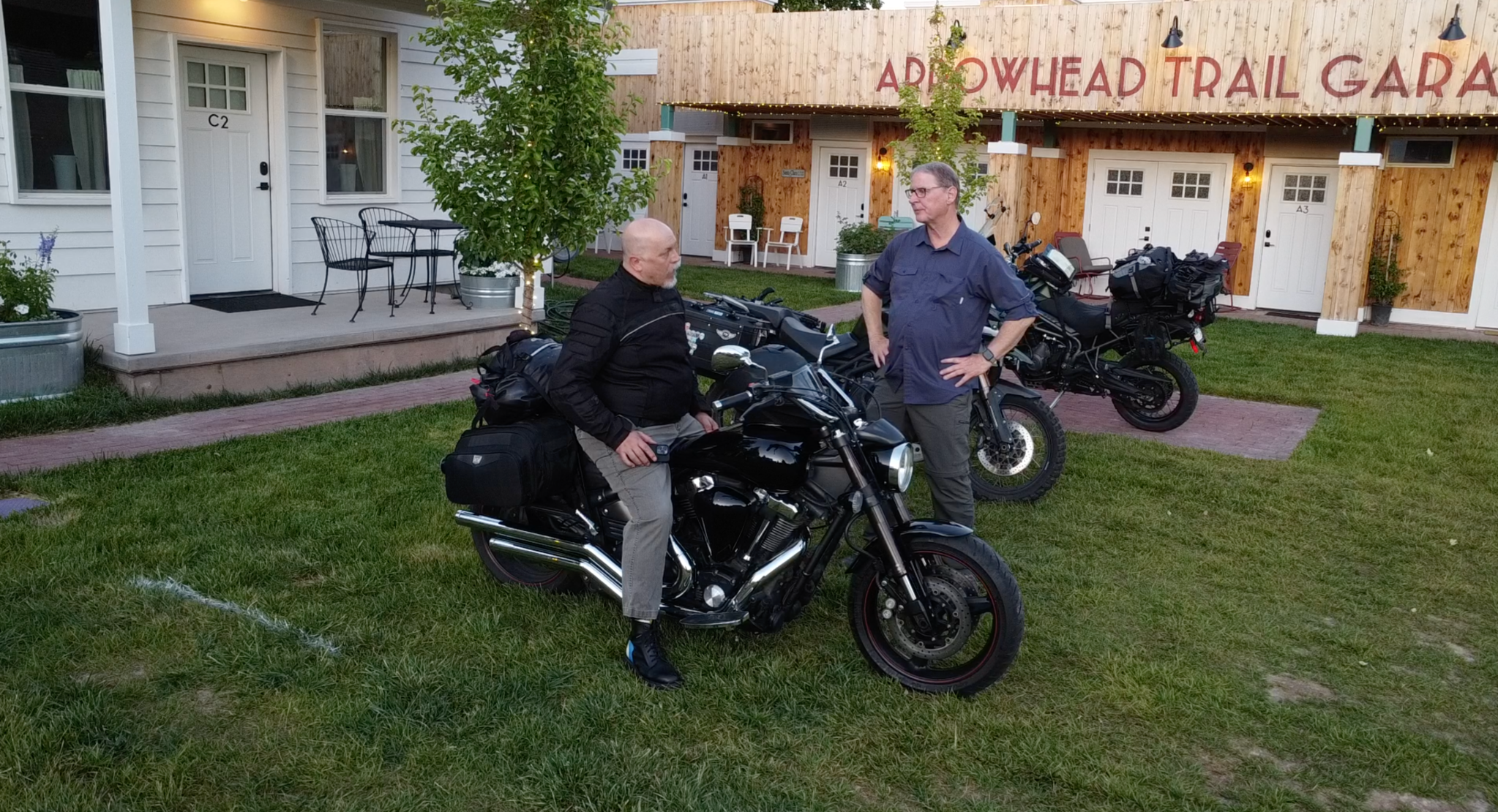
We left the Inn early the next morning to escape the heat of early June and get into the altitudes of the Arizona Strip and on to the North Rim. Brian had a campsite reserved at Demotte Campground not far from the Kaibab Lodge where we stopped to set up tents and then made our way to the canyon in the light of a glorious afternoon. One of many little epiphanies that punched through the patina of my self-awareness was how much at home I feel at a national park, and this trip and others would prove that every time we passed that familiar National Park Service signage.
I didn’t realize at the time the struggle Brian was having with me being along for the ride. It wasn’t that he was against it, it was his perpetual wondering if I was going to wake up the next day, call it quits and head home. Therein was a bit of a dilemma for him with the choice of accompanying me back to Bountiful or continuing along the strand on this trip that he not only painstakingly planned, but was also a bucket list for him. I felt his malaise more as a background noise than anything more obvious, even through his persistent welfare checking along the way–nothing bothersome or over the top, he was careful–I remained aloof to his worries and I’m not sure if that was just a simple defense mechanism so I could enjoy the trip. To admit it, it being the guillotine of my condition, was to allow it, as was my thinking along the way, so I stuffed it along with my sensitivity to Brian’s dilemma way down into one of my panniers. The first test of my perseverance would be the day we left the North Rim and rode to Mesa Verde, three hundred sixty six miles. Piece of cake.
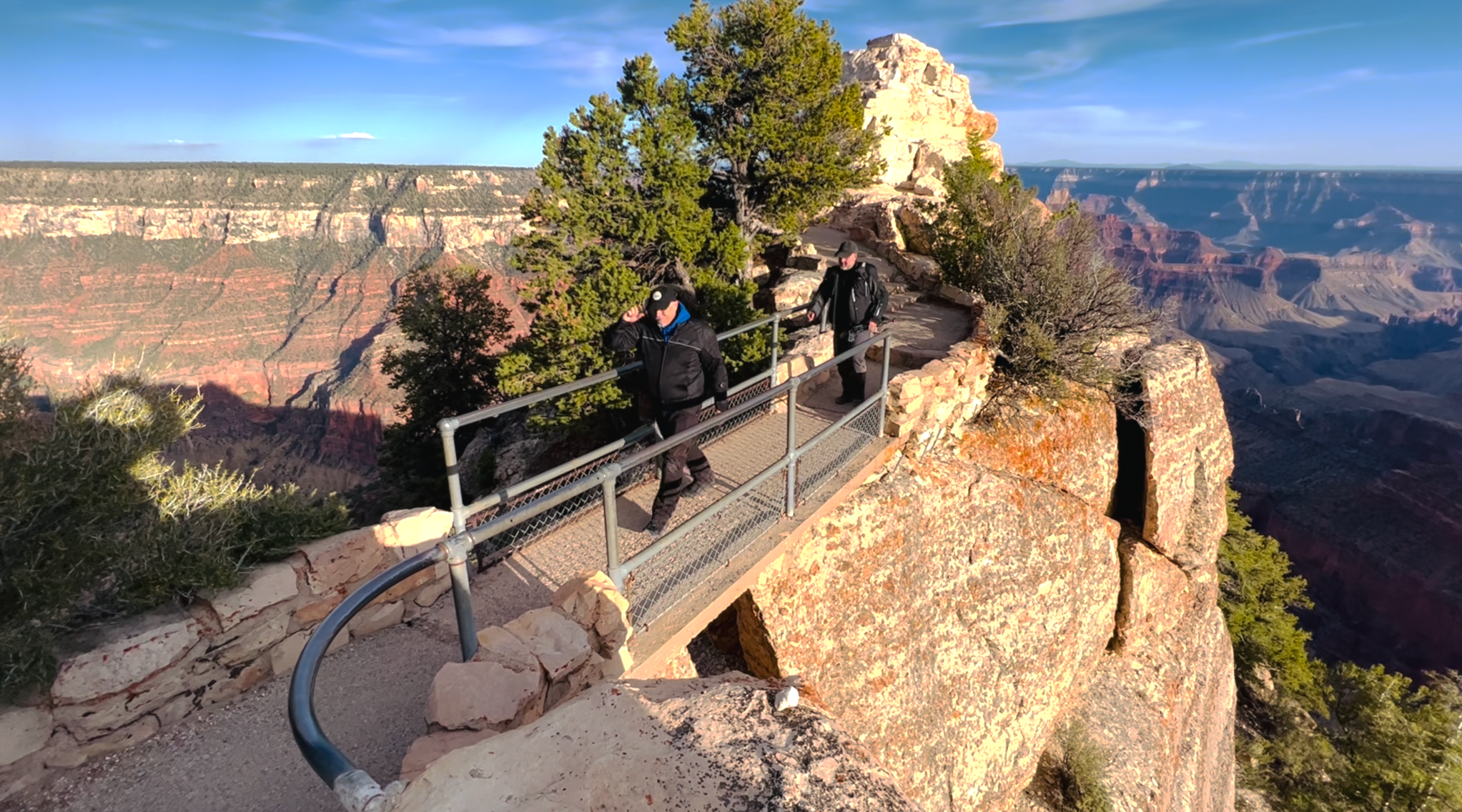
Highway 67 out of the North Rim to Jacob Lake and 89A through Marble Canyon and the Navajo Bridge is one of my all-time favorite routes, having traveled it over a dozen times on rides and during production for The Mountain Meadows Massacre documentary. The road leaves the forested Kaibab Plateau and descends into the House Rock Valley, skirting the Vermillion Cliffs National Monument until it crosses the Colorado River, winds up past Antelope Pass Canyon and on to Page, Arizona.
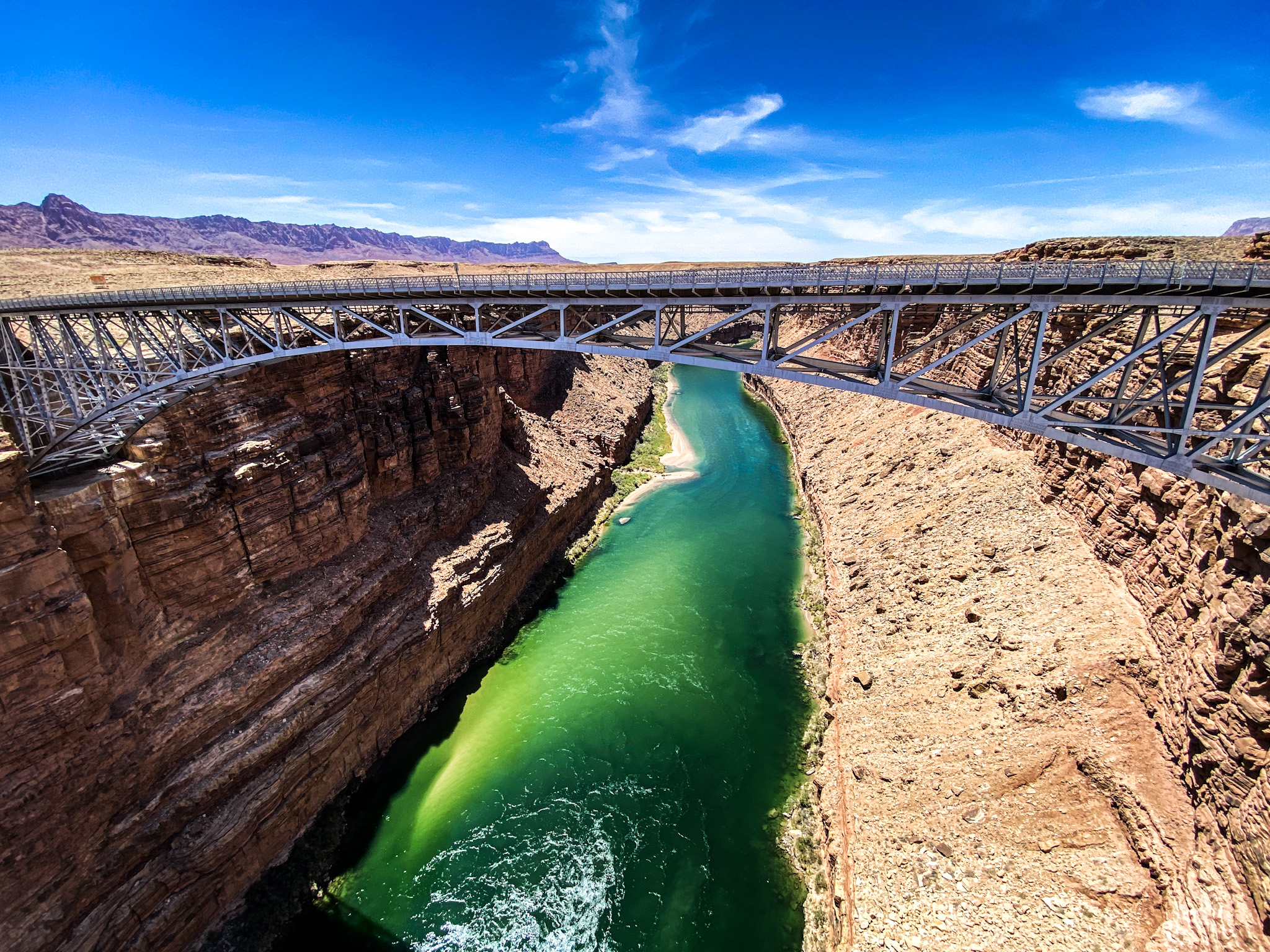
It’s the most beautiful part of the Arizona strip. From Page we rolled through the less-beautiful part of the Strip and left Arizona as we hit The Four Corners and entered into Colorado and made our way to Mancos where Brian had an AirBnB reserved for us just outside of Mesa Verde National Park. It was an amazing day. I arrived tired, but so did the other two and I was no worse for wear. Eighteen days to go.
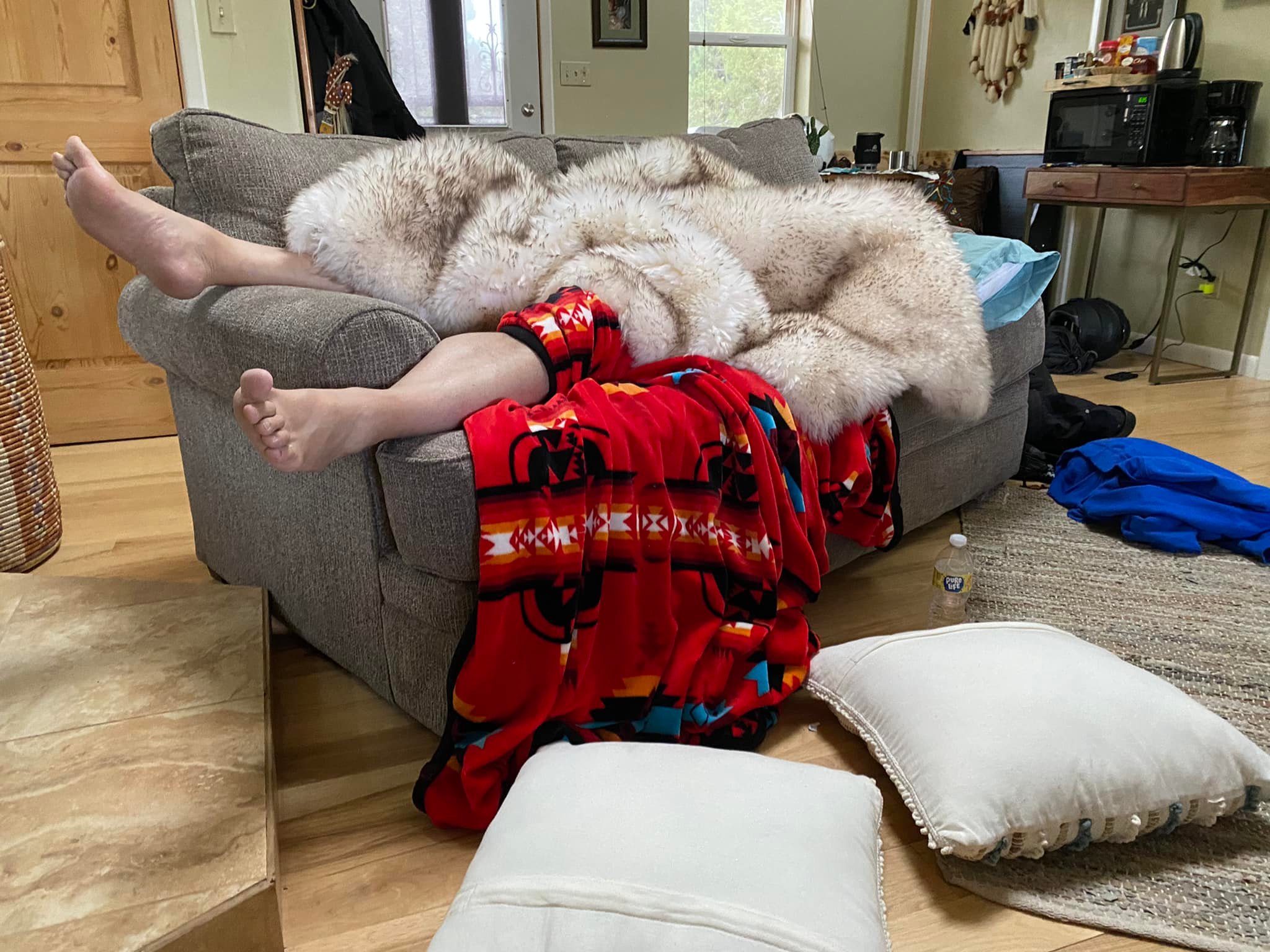
While my folks were still living in Southern Utah they’d take the time to pack a picnic lunch and head out to the area’s environs in their Dodge Ramcharger, from the Beaver Dam Wash National Conservation Area to Lee’s Ferry and the Cliffdwellers, and all points in between; the impetus of my own wanderlust. I was too busy with my new found social life as a California transplant at a very small, very conservative community college to pay much heed to their accounts of their discoveries, but now their voices come back to me like a narrative when I walk our common ground, and they had a lot to say as we rode through Mesa Verde National Park. I’d been primed for this visit with rock art and petroglyphs from my travels around Utah, but as we hiked into the Long House I was instantly infatuated with the human spirit that created and sustained this ancient domicile. The organization of labor, the calculations, the innovations, and the endurance of this site spoke to two simultaneous notions, the efficacy of community, and us modern folk aren’t as special as we think we are. My parents’ fascination and respect for the indigenous was no longer lost on me while I not only got an introduction to the area’s natural history, I took a deeper dive into their fascination with it and added a new insight into their shared scope of humanity.

There were a number of ways I could’ve approached this ride, but the one I was most familiar with, the one I had practiced the majority of in my traveling life, was as a filmmaker.
The ride was a route through the most national parks one could visit in a loop along the Great Divide, including the North Rim of the Grand Canyon, Mesa Verde, the Black Canyon of the Gunnison, the Great Sand Dunes, Rocky Mountain, the Grand Teton and Yellowstone National Parks. Even though we were starting in the footprint of Utah’s Grand Circle, we skipped the Beehive State, having duly visited Zion, Bryce, Capitol Reef, Canyonlands and Arches National Parks on other trips, stickers adhered.
My walk-on friend and fellow Triumph enthusiast, Brian, was the trip planner and included another rider, Mark, who was supposed to join the adventure mid-tour, somewhere around Denver, but the coronavirus had different plans for him. Brian and I talked at length about the route, sharing maps and spreadsheets, laying out the way with as an efficient schedule as possible. In that process I kept indicating that I’m down for the ride as well, while Brian, having ridden with me through Utah was more than skeptical, he’d seen me travel firsthand, which, I guess, wasn’t very pretty and more daunting than I had recognized for myself. It wasn’t until I asked Brian about his riding jacket, when I realized I wasn’t included in the rider pool. “Why do you want to know?” He said. “Because I want to buy that one for this trip.” “Well, to be clear, what trip are we talking about here?” He asked. “The National Park trip.” I said. And that was awkward. He was thinking I wasn’t up to the arduous nature of riding the three thousand-plus miles in twenty days in June. And I was thinking, “Yeah, I could do that. If not, I could just go home.” This is where talking would’ve come in handy, on both our parts.
Once we got that figured out, I bought new gear, we planned more in earnest, and I invited my friend Ed Candland along. I’d been begging him to join me for another ride since we knocked out the Pacific Coast Highway a decade before. I called him up. “Ed, I’ve got a bucket list. I want to go on a ride and I want to go with you.” It should be noted that Ed is the busiest guy I know, a staple in Utah’s music education scene if not the entire planet traveling all over the globe, and at the time in the throes of building his bow-rehairing business, which through the years were barriers to our riding together, but Ed had just retired from teaching, and I played the cancer card. “I’ve been diagnosed with a rare, aggressive and terminal blood cancer and would really like to ride with you again.” I’ve learned all kinds of things about cancer since I’ve had it rubbed in my face, not the least of which is its persuasiveness. Ed joined the tour.
This is something done not without a good amount of forethought, planning and gearing up. Whether it be for a few days or a few weeks, the gear is the same, it’s just the amount of consumables that changes. While Brian and I were in for the full twenty-plus days, Ed was only able to join us for the first four which included camping at the North Rim of the Grand Canyon and then moving on to Mesa Verde. There are a number of types of gear required for such an adventure, the two at the top of the list are riding and camping gear, of which Ed had none save for his helmet and a jacket I gave him years ago when we did the Pacific Coast Highway ride and documentary, so Ed made a quick trip from his home in St. George to ours in Bountiful where we got him outfitted and packed.

While Brian was making his way from the bay area of California to Southern Utah, Ed and I rode the I-15 corridor three hundred miles to Santa Clara, Utah, where we’d all meet up and officially begin what has become known as the Pearls on the Strand Tour. When I interviewed Brian for this trip’s documentary he talked about his premise of averting his midlife crisis by buying a motorcycle and justifying its acquisition by riding to “Use the national parks as pearls on the strand… and that will pull me forward…” And thus the documentary was named, not realizing how many entendres pearls and strand would soon adopt throughout this journey.
On the night before departure we met to talk about the trip plan and to get Ed and Brian better acquainted which wasn’t difficult to do. I’m not sure what it is, but it’s been my experience when I bring two friends together from disparate backgrounds they click, some click better than we clicked, and that’s okay. If there’s any single meaning I could draw from living it is to make connections, and if that takes a motorcycle trip, those connections root deep. We met at (the) Inn Santa Clara, a dream-come-true vision of my dear friend Jennifer and her architect husband Richard, an innovative departure on how one travels and stays away from home. Inn Santa Clara has become my home away from home whenever I’m in Southern Utah.

We left the Inn early the next morning to escape the heat of early June and get into the altitudes of the Arizona Strip and on to the North Rim. Brian had a campsite reserved at Demotte Campground not far from the Kaibab Lodge where we stopped to set up tents and then made our way to the canyon in the light of a glorious afternoon. One of many little epiphanies that punched through the patina of my self-awareness was how much at home I feel at a national park, and this trip and others would prove that every time we passed that familiar National Park Service signage.
I didn’t realize at the time the struggle Brian was having with me being along for the ride. It wasn’t that he was against it, it was his perpetual wondering if I was going to wake up the next day, call it quits and head home. Therein was a bit of a dilemma for him with the choice of accompanying me back to Bountiful or continuing along the strand on this trip that he not only painstakingly planned, but was also a bucket list for him. I felt his malaise more as a background noise than anything more obvious, even through his persistent welfare checking along the way–nothing bothersome or over the top, he was careful–I remained aloof to his worries and I’m not sure if that was just a simple defense mechanism so I could enjoy the trip. To admit it, it being the guillotine of my condition, was to allow it, as was my thinking along the way, so I stuffed it along with my sensitivity to Brian’s dilemma way down into one of my panniers. The first test of my perseverance would be the day we left the North Rim and rode to Mesa Verde, three hundred sixty six miles. Piece of cake.

Highway 67 out of the North Rim to Jacob Lake and 89A through Marble Canyon and the Navajo Bridge is one of my all-time favorite routes, having traveled it over a dozen times on rides and during production for The Mountain Meadows Massacre documentary. The road leaves the forested Kaibab Plateau and descends into the House Rock Valley, skirting the Vermillion Cliffs National Monument until it crosses the Colorado River, winds up past Antelope Pass Canyon and on to Page, Arizona.

It’s the most beautiful part of the Arizona strip. From Page we rolled through the less-beautiful part of the Strip and left Arizona as we hit The Four Corners and entered into Colorado and made our way to Mancos where Brian had an AirBnB reserved for us just outside of Mesa Verde National Park. It was an amazing day. I arrived tired, but so did the other two and I was no worse for wear. Eighteen days to go.

While my folks were still living in Southern Utah they’d take the time to pack a picnic lunch and head out to the area’s environs in their Dodge Ramcharger, from the Beaver Dam Wash National Conservation Area to Lee’s Ferry and the Cliffdwellers, and all points in between; the impetus of my own wanderlust. I was too busy with my new found social life as a California transplant at a very small, very conservative community college to pay much heed to their accounts of their discoveries, but now their voices come back to me like a narrative when I walk our common ground, and they had a lot to say as we rode through Mesa Verde National Park. I’d been primed for this visit with rock art and petroglyphs from my travels around Utah, but as we hiked into the Long House I was instantly infatuated with the human spirit that created and sustained this ancient domicile. The organization of labor, the calculations, the innovations, and the endurance of this site spoke to two simultaneous notions, the efficacy of community, and us modern folk aren’t as special as we think we are. My parents’ fascination and respect for the indigenous was no longer lost on me while I not only got an introduction to the area’s natural history, I took a deeper dive into their fascination with it and added a new insight into their shared scope of humanity.

